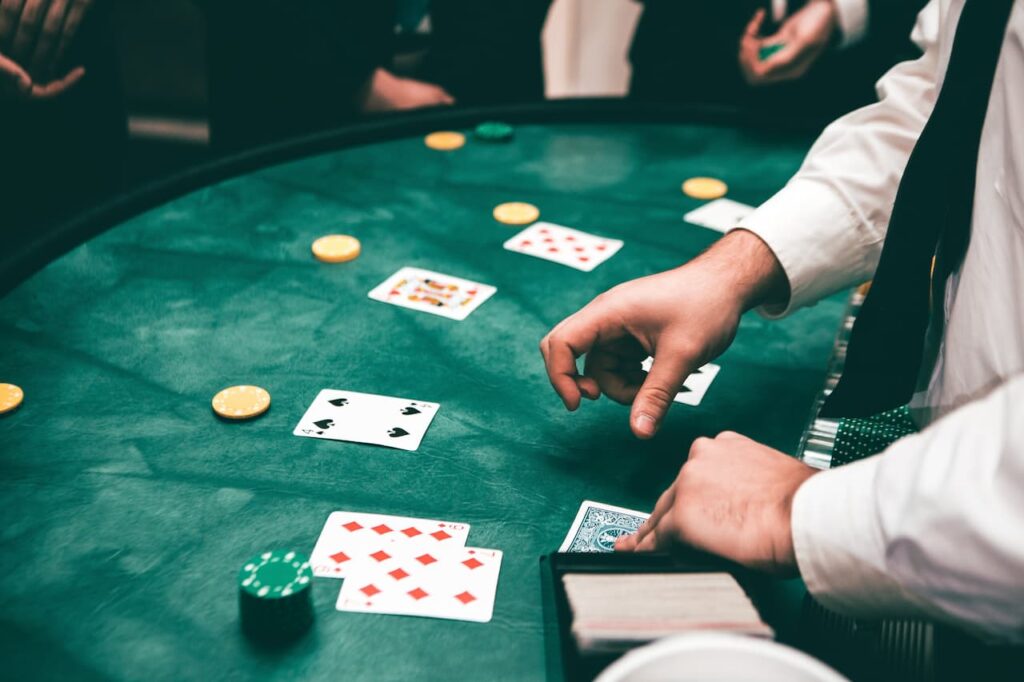
More and more casinos in the US are organizing art exhibitions in hopes of attracting new visitors. The trend drew the attention of journalists Associated Press. Moreover, gambling houses approach the process creatively and with the help of art not only expand their client base, but also allow you to take a fresh look at some great works. For example, the much-acclaimed exhibition “Beyond Van Gogh: An Immersive Experience” opened last week at the in Atlantic City. The exposition contains more than 300 works of the great artist, translated into digital format. The paintings are projected onto all rooms, literally surrounding themselves and completely immersing them in the world of Van Gogh. Images grow and flow into each other, cherry trees grow and bloom, and flower petals are blown away by the wind. Pictures on the walls appear and disappear, transforming into other images around the viewer, giving an unforgettable experience.
Gambling has long been a mass entertainment, because they allow you to have fun, relax and win real money. Not surprisingly, artists throughout history have tried to find inspiration for their work in gambling. Antonio Matias with the support of melhores online cassino introduces readers to the most popular films about gambling.
Rounders, Michelangelo Merisi da Caravaggio
The Italian artist Michelangelo Merisi da Caravaggio painted the famous painting “Rounders” around 1594 – 1596, which brought him real popularity. The work is devoted to gambling in Italy. Caravaggio without embellishment showed the story of a naive young man who got involved with two cheaters. The dagger on the belt of one of them clearly hints at the possible outcome of the scam. However, they are united by a common drama in which everyone plays a role.
Now the painting is stored in the United States, at the Kimbell Art Museum in Fort Worth.
“Card Players”, Paul Cezanne
A series of Paul Cezanne, consisting of 5 paintings, united by one theme – playing cards, was written in the period from 1890 to 1896. In his canvases, which are considered the most expensive in his heritage, the artist depicted the life and rest of the peasants, their simple way of life. Therefore, in the works of Cezanne, it is not excitement that is read, but a routine activity – it seems that the players are wasting their time. There is nothing to do, why not spread to the cards?
Four paintings from this series are kept in museums in Europe and America. The fifth until recently was in a private collection, until it was bought by the authorities of Qatar for the National Museum.
“At the Roulette Table in Monte Carlo” by Edvard Munch
The famous expressionist painter Edvard Munch devoted several paintings to gambling after he became addicted to roulette during his stay in the south of France. He was fascinated by the atmosphere of the casino, which led to the creation of this wonderful piece of art in 1892 – “At the Roulette Table in Monte Carlo”. In his work, the artist, who captured the drama of roulette, conveys the nervous tension at the gaming table, where losing or winning can have fatal consequences.
Today, the painting can be seen in the Munch Museum in Oslo, Norway.
“Dogs Playing Poker” by Cassius Marcellus Coolidge
Cassius Marcellus Coolidge’s Dogs Playing Poker series highlights 18 canvases painted from the mid-1900s to the mid-1910s. The series was commissioned by Brown & Bigelow to advertise cigars and made the already popular card game famous. In the artist’s works, all the figures characterize humanized dogs playing poker. The artist was very fond of dogs, so he decided to depict American players in this form. Expressive emotions on the muzzles of animals, glasses with alcoholic drinks, pipes for smoking – all this emphasizes the special atmosphere that prevails in poker clubs. For example, you can play poker in it self in JackpotCity Casino and you can plunge into the atmosphere of the games and at the same time get your sign-up bonus.
Coolidge’s paintings have become widespread in the United States as examples of kitsch art. In addition, they were often copied and many parodies were written. In 2005, at an auction in New York, 2 paintings in the series were sold for $590,400 to a private collection.

“Soldiers Playing Cards” by Fernand Léger
A French Impressionist Cubist painting depicts three soldiers playing cards. This artwork was painted by Fernand Léger in 1917. The participants in the game are represented by symbolic images of details emphasizing their rank. They seem to be disassembled into parts, like parts of the general mechanism of the game. The painting shows the artist’s love for the use of mechanization in the First World War.
This canvas is considered one of the best works of Fernand Léger and is displayed in the Kröller-Müller Museum, Otterlo in the Netherlands.